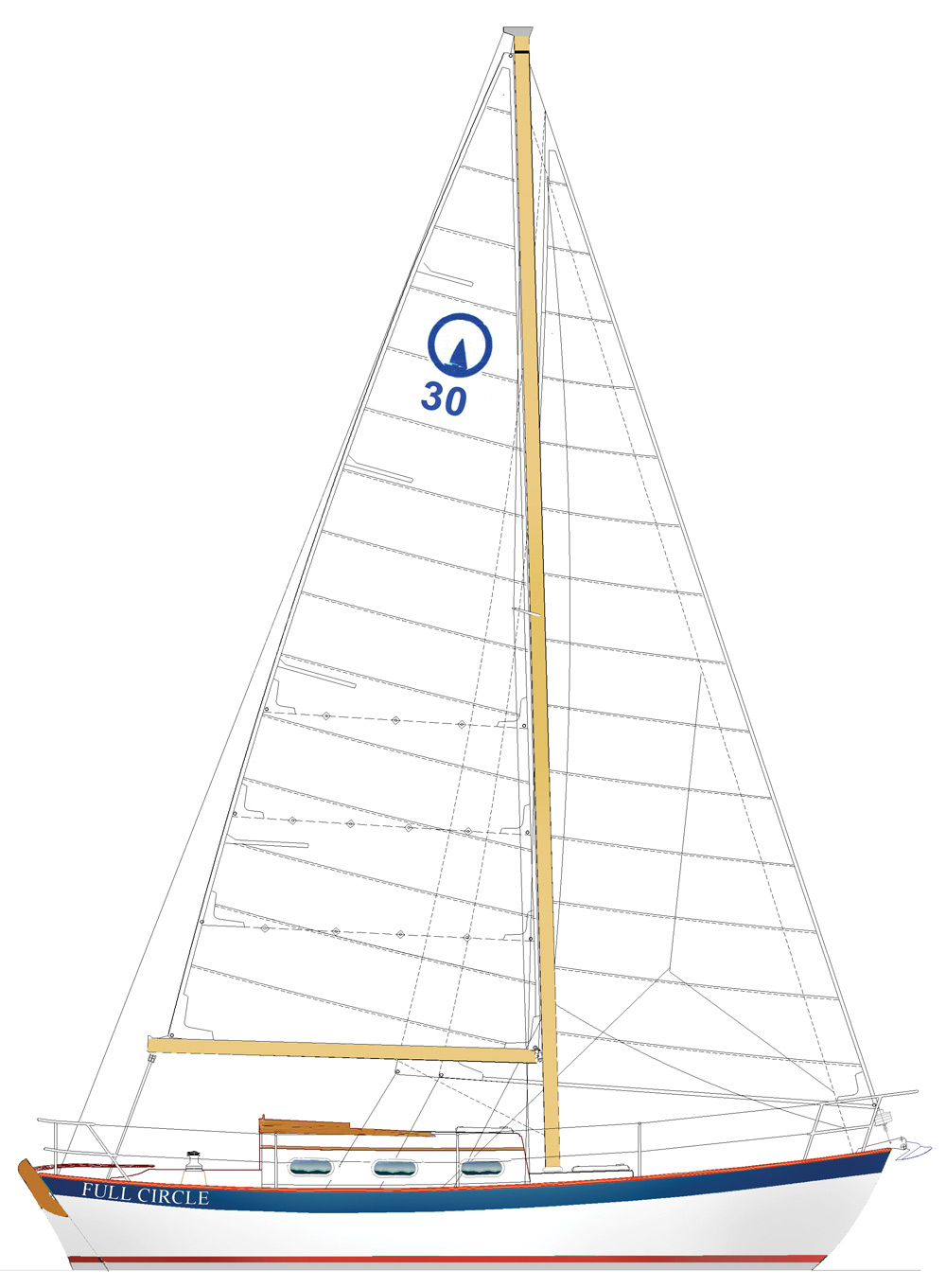Full Circle 30
This small oceangoing cruiser can be built by DIY builders
It’s hard to find interesting designs for review these days. So this month I thought we’d try a little different approach. In early 1973 I quit my design job in Seattle, loaded my Peugeot wagon and drove to Nahant, Massachusetts, on the north shore of Boston. I had applied, tried out for two weeks and then been offered a job with Dick Carter’s prestigious design office. I was going from the world of very uninspiring ferrocement boats to an office known for producing successful IOR racing boats for a variety of international clients, mostly in Europe and the U.K.

Dick’s office was in a five-story submarine watch tower on the tip of Nahant. I would be working with Yves-Marie Tanton, Chuck Paine and Mark Lyndsay. Dick spent much of his time out of the office in Europe or the U.K. hustling up clients for more custom IOR boats. I was to work alongside Yves-Marie on the third floor of the tower. We had a 12-foot-by-12-foot workspace for two drawing boards.
Chuck and Mark had the fifth floor “penthouse” office. Mark worked alongside Chuck much in a similar way to my position under Yves-Marie. Together we cranked out the work and I enjoyed every minute of it. When lunch time came we’d go out to Dick’s big front yard, sit under a big oak tree and talk about our dreams of the day when the name on the door would be one of our own names. During these lunch discussions we shared the work we were doing on our own, after hours, i.e. our dreams. Chuck would bring a half model he was carving. Sometimes he just brought his woodworking chisels and would fastidiously sharpen them. A lot of yacht design ideas were exchanged.
The way the work was distributed was a bit loose. Yves-Marie did the lines drawings and I did most of the rest of the design drawings on custom boat projects. Chuck and Mark worked on production boat designs. Dick would look over our shoulders occasionally but pretty much left us alone. Dick often would not look at our work until it was time to take off and meet with the client. He was a great boss.
Despite all our work on IOR boats, Chuck liked double-enders as much as I did. But Chuck’s double-enders were not at all like mine. I strived to push the volume aft to flatten the buttocks and increase sailing length. Chuck preferred a more traditional approach to the double-ender form with a much finer stern than my designs. Chuck had the ability to produce very good performing boats while preserving a very delicate and “yachty” look to the overall picture. Chuck never produced an awkward looking design.
Chuck’s first finished double-ender was Carol. Chuck named his designs after his high school girlfriends. Carol had a D/L of 318 and a L/B of 3.04. Chuck’s double-enders all had full keels but on Carol you see a highly swept leading edge to the keel to help reduce wetted surface. In plan view you can see how symmetrical the waterlines are fore and aft. The advantage to this shape is that as the boat heels, the shape going through the water changes very little giving the boat a light helm feel at any heel angle. Note the hollow garboards and strong deadrise on this design. Anytime you have a full keel you can almost count on a D/L over 300 due to the volume of the keel.

Comments